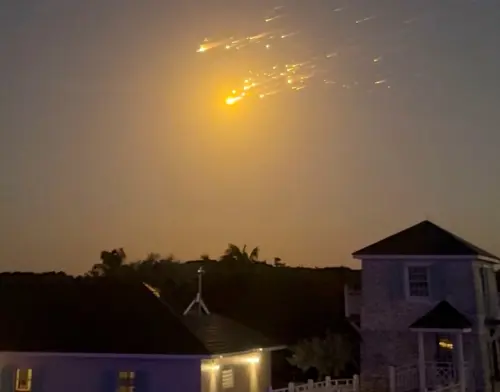SpaceX's Starship spacecraft exploded in space on Thursday minutes after lifting off from Texas, leading the FAA to halt air traffic in parts of Florida, marking the second consecutive failure this year for Elon Musk's Mars rocket program. Videos on social media captured fiery debris streaking through the dusk skies near south Florida and the Bahamas after Starship broke up in space, as seen on a SpaceX live stream of the mission.
The eighth Starship test failure, following on the heels of the seventh, poses a setback for Musk's ambitious Mars exploration plans. The 403-foot (123-meter) rocket system is pivotal to Musk's goal of human missions to Mars by the early 2030s.
Following the mishap, the Federal Aviation Administration (FAA) briefly issued ground stops at several Florida airports due to "space launch debris" and initiated a mishap investigation.
SpaceX's live stream showed the Starship upper stage spinning in space, with multiple engines shutting down before losing communication with the ship around 9 minutes and 30 seconds post liftoff.
In a late statement, SpaceX confirmed an "energetic event" in Starship's aft section led to engine loss, causing a disruption in attitude control and communication. The company assured that no toxic materials were involved in the debris.
The FAA requires SpaceX to identify the cause of the failure and obtain approval before the next Starship flight. SpaceX was granted a launch license for this test flight while the FAA investigation into the previous failure remained ongoing.
The aim of the thwarted mission was for Starship to orbit Earth nearly in full and re-enter the atmosphere over the Indian Ocean for a splashdown, mirroring a landing sequence pivotal to SpaceX's future goals for the rocket's development.
